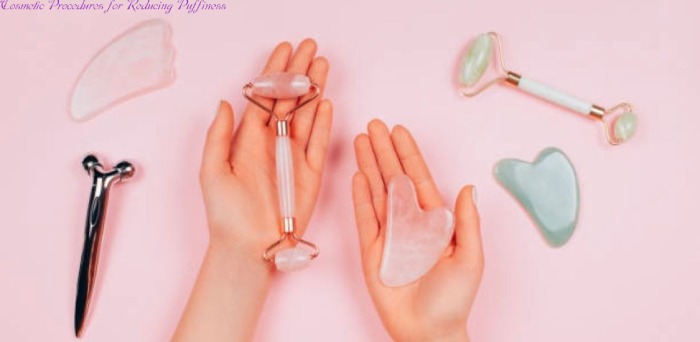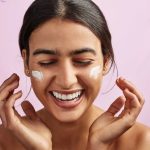Puffiness, especially around the eyes and face, can make people appear tired, older, and less bright. While puffiness might be caused by genetics, ageing, allergies, or lifestyle choices, there are several cosmetic treatments, including chemical peels, that can help minimise puffiness and restore a rejuvenated appearance.
Discover some of the most successful cosmetic treatments for reducing puffiness and providing apparent results.
Table of Contents
Eyelid Surgery (Blepharoplasty):
Eyelid surgery, often known as blepharoplasty, is a surgical technique that tackles puffiness and drooping skin around the eyes. This surgery can remove extra skin, fat, and muscle from the upper and lower eyelids, leaving them looking younger and refreshed. Blepharoplasty can drastically minimise under-eye bags and restore a more refreshed and alert appearance by removing extra tissue that leads to puffiness. It is a more intrusive surgery with recovery time, but the long-term benefits make it a popular alternative for individuals looking for a permanent cure.
Non-invasive Eye Rejuvenation:
Various cosmetic techniques can successfully reduce puffiness around the eyes for people who prefer non-surgical solutions. These treatments are non-invasive and require little to no recovery time.
Dermal Fillers: Dermal fillers can be judiciously injected beneath the eyes to fill hollows and minimise puffiness. Dermal fillers can produce a more youthful and refreshed appearance by increasing volume and smoothing out the region. Fillers based on hyaluronic acid are often utilised for this purpose since they give instant benefits with low recovery time.
Botox injections can be used to relax the muscles around the eyes and reduce crow’s feet, both of which can contribute to a puffy look. Botox can give the eyes a more rejuvenated and young appearance by smoothing out wrinkles and creases. The effects are transitory but might linger for months.
Contouring of the Face:
Excess fat in particular parts of the face can also produce puffiness. Facial contouring operations can help decrease puffiness and improve overall facial shape.
Liposuction: This procedure removes extra fat from particular parts of the face, such as the cheeks or jawline. Liposucton can provide a more defined and sculpted face shape by targeting these regions, decreasing puffiness and enhancing overall facial harmony. Liposuction is a surgical technique that needs recovery time but produces long-lasting benefits.
Kybella: Kybella is a non-surgical procedure for reducing submental fullness, sometimes known as a double chin. Kybella efficiently reduces chin puffiness and improves face features by injecting deoxycholic acid, a naturally occurring chemical that helps break down fat cells. To attain the best outcomes, many therapy sessions may be required.
Tightening of the Skin:Loose or sagging skin can lead to puffiness in particular parts of the face. Skin tightening operations can help firm and lift the skin, decreasing puffiness and giving the illusion of being younger.
Radiofrequency (RF) Therapy: Radiofrequency (RF) therapy heats the deep layers of the skin, encouraging collagen formation and tightening loose skin. This non-invasive process can enhance skin elasticity, decrease puffiness, and create a more youthful contour on various parts of the face. RF treatment is often painless, with little downtime and long-lasting outcomes.
Ultherapy is a non-surgical procedure that uses ultrasonic technology to lift and tighten the skin of the face, neck, and décolletage. This process encourages the creation of collagen deep inside the skin, resulting in firmer and tighter skin. Ultherapy can give a notable reduction in puffiness and a more lifted and rejuvenated look by treating regions of puffiness and drooping. The technique is non-invasive, there is no downtime, and the outcomes increase progressively over time.
Peels using chemicals:
Chemical peels can help reduce puffiness and improve overall skin texture. The application of a chemical solution to the skin exfoliates the outer layer and stimulates skin regeneration in these peels. Chemical peels can help reduce puffiness by treating skin congestion, increasing circulation, and promoting dead skin cell shedding. This procedure produces a more youthful, smoother, and revitalised look. Chemical peels range in severity from superficial to deep, and the intensity may be customised to the individual’s needs.
Massage for Lymphatic Drainage:
Lymphatic drainage massage is a non-invasive therapy for reducing puffiness by increasing lymphatic circulation and removing excess fluid from the tissues. This mild massage technique stimulates the flow of lymph fluid and targets the lymph nodes, which can help reduce face puffiness and improve overall skin tone. A qualified aesthetician or massage therapist may do a lymphatic drainage massage, which can be included in a regular skincare programme for continuous maintenance.
Skincare Items:
Using high-quality skincare products designed remarkably to reduce puffiness and preserve a rejuvenated appearance can also help. Caffeine, peptides, antioxidants, and hyaluronic acid are all nutrients that can help enhance circulation, decrease inflammation, boost collagen synthesis, and moisturise the skin. Incorporate eye creams, serums, and masks that mainly treat puffiness into your skincare regimen to complement and enhance the benefits of your cosmetic operations.







